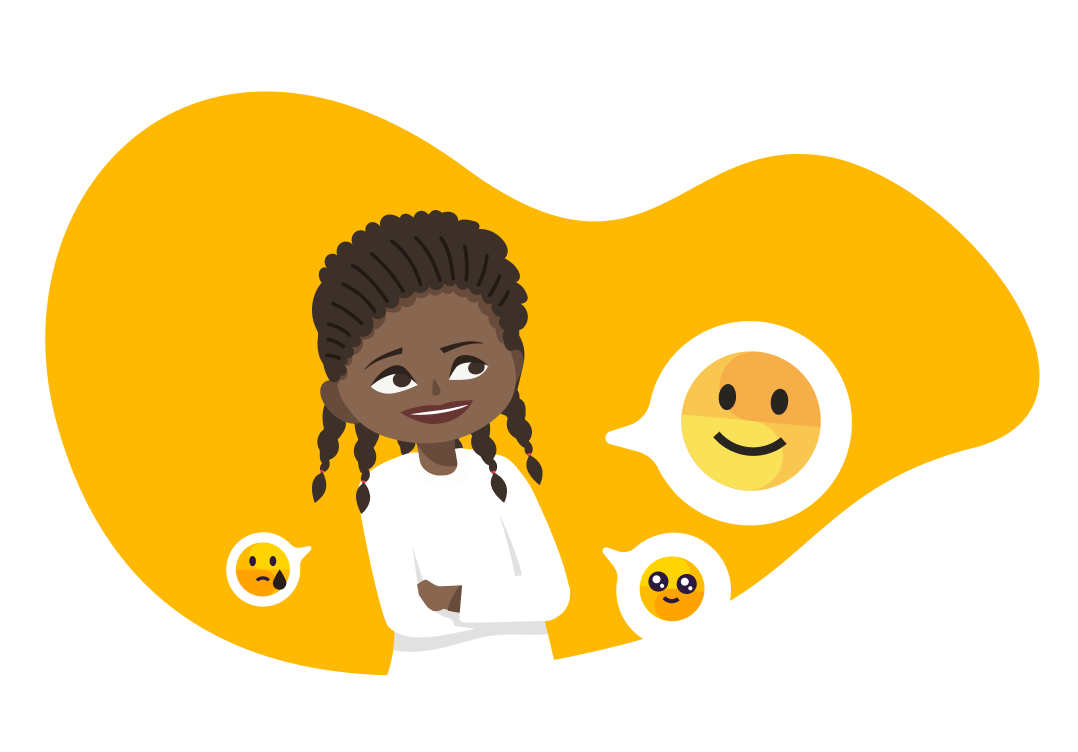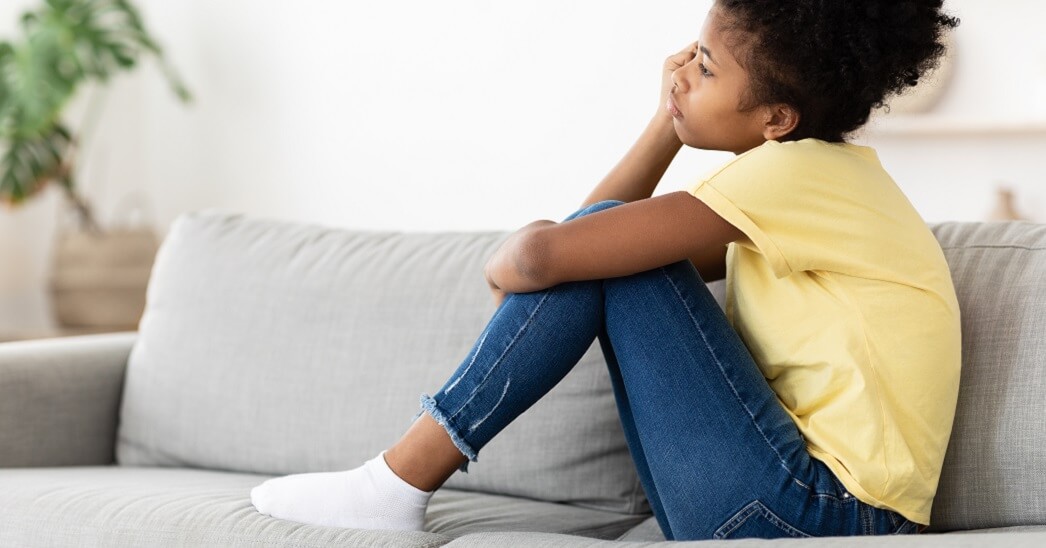
Coping strategies for kids
Feeling anxious and emotional from time to time is a part of our life. Still, it can be especially common during the growth stages of a child. New experiences come along with the need to face new challenges, and all this is stress for a young mind. Too much anxiety can have a devastating effect on the child’s life and future. This feeling can provoke him to avoid difficult situations, create conflicts, and feel despair.
What are coping skills?
Coping skills are a type of attitude and a mindset that helps us sustain difficulties, cope with stress and anxiety, adapt and overcome risks. A fancy word for coping skills is psychological resilience which is based upon the following capabilities:
- to think of difficulties as a normal part of your life,
- to accept failures and problems, perceive them as temporary and solvable,
- to believe that you can succeed if you work hard,
- take action to solve the problems that arise,
- build strong relationships with your family and community,
- have a support system and ask for help.
How do you get into such a mindset? Psychological resilience develops over a long period of time as a child acquires other life skills. Good and supportive relationships in the family, with peers and other surrounding people, as well as societal attitudes, contribute to a building resilience in children. So, the good news is that psychological resilience can be learned.
Though, reliable ways to relieve stress for most people are individual. And you will need to help your child find his or her ways to get rid of excessive emotional tension. For some kids, it can be physical activity. For others, it is contact with nature, communicating with close people, or doing art. Then some enjoy solitude or even meditation.
2 types of coping techniques that should not be confused
Depending on the context, we need to use different strategies to cope with a situation. In general, some situations involve dealing with strong emotions, and then there are moments when we need to focus on problem-solving. It is important to realize the difference between them and to explain it to the child.
Emotion-focused coping techniques deal with situations that are beyond our control. They teach us to accept the way things are or how something went. We learn to recognize, accept and control our emotions, deal with stressful and unpleasant situations, control our rage, etc. In a way, we forgive ourselves and learn to understand our personality. It is a passive technique.
On the other hand, problem-solving coping skills teach us to be proactive in situations that depend on us. We cannot allow ourselves to give up if we can contribute to something or change things around. Sometimes we need to take control of a situation, take on a responsibility, and just do something about an unpleasant situation. It is an active technique.
In this article, we will talk about emotion-focused coping skills.
Why does a kid need to learn coping skills?
Stressful situations have a much greater impact on children than adults. Thanks to our experience, we can put up with most situations that make us feel uncomfortable. On the other hand, kids are just beginning to learn about this world, and they are very impressionable. Every new information about it, a situation they get in is stressful for them. But they do not know how to cope with stressors yet. The situation that strikes them, good or bad, stays in their memory for a long time. They can relive it over and over again.
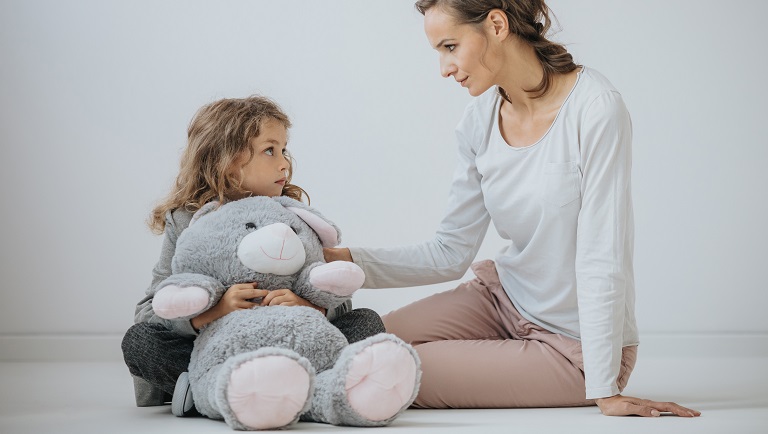
As a result, the child can withdraw and lose interest in the world around him. Moreover, chronic stress can also come from too painful or long-lasting troubles, leading to the child’s strength and resources running out. It kills brain cells preventing the kid from absorbing new information and learning well.
Stress can also lead to some serious mental and health problems: it increases inflammation and can cause digestive disorders in children. Likewise, it reduces the synthesis of growth hormones, making the child grow slower. Low stress tolerance is the main cause of bad habits and problematic behavior in adolescence. It is easier to teach a child to resist stress than to cope with all these problems later.
When does a kid need to use coping skills?
Often parents complain that the child is unbalanced, tearful, timid, anxious, out of control, aggressive, and so on. Of course, all of these manifestations may have different causes and require different approaches to help. But what they have in common is that these negative emotions and behavior signal to adults that the kid does not feel well and cannot handle his emotions.
Teaching a kid some basic coping skills will help prevent emotional breakdowns and improve your child’s emotional well-being.
Stress and anxiety
When dealing with stress and anxiety, you need to keep in mind two things.
First, stress is a normal biological reaction of our brain, and the part responsible for it is called the amygdala. Its role is quite “primitive” — to respond to the messages of danger and get us out of any perilous situation. When the amygdala receives these messages, it turns on the defense mechanism by transmitting signals further, so the body could get ready for the “attack” from the outside. Amygdala does not know that these situations that we play in our heads are imaginary. And this brings us to the second important thing.
The problem with anxiety nowadays is that in most cases there is no real danger to fight with. It is all in our heads, merely our fears that something might happen. We think a lot about it and keep imagining it in vivid and impressive details. Like when a child thinks: “What if I screw up? What if I say something stupid in front of the whole class?” And then the physical symptoms come along: he blushes, tenses up, or even starts shivering. This process can get dramatic, but kids do not realize that. Simply being aware of these processes in our body will help to reduce anxiety.
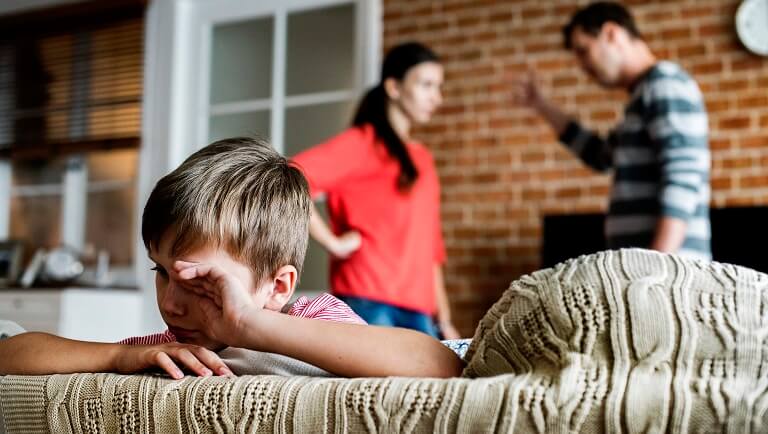
Usually, it starts with a feeling of initial anxiety. It occurs when a child encounters something new for a short time. For example, the first time he hears his parents fighting, goes to get a vaccination or oversleeps for school. Also, preschool children’s anxiety often manifests as fear of the darkness, confined space, and loneliness. At the age of 5 to 7, a fear of dying may appear.
Primary anxiety, in general, is not dangerous for a child’s psyche, and you can use it as a developmental trainer. You need to teach your child to notice the symptoms of anxiety. After a child has experienced short stress, you can together analyze what has happened. Gently mention to him when you see changes in his behavior and ask if he sees them too: “I see you biting your nails. Do you notice that?”. Help your child understand that it is normal to feel anxious and that everyone experiences anxiety in their way.
Emphasizing respect for the child’s experience helps him get over it faster and pick up the words to what is going on with him. Normally, a kid’s mind remembers this state of discomfort and prepares for the second stage — resistance.
But sometimes, the system breaks down, and a child cannot move to the next stage. Here are typical signs of an overly anxious child:
- He often feels embarrassed and blushes in unfamiliar surroundings, cannot establish contact with others.
- His hands are usually cold and moist.
- He sweats a lot when he is nervous.
- He cannot concentrate for a long time and gets tired quickly.
- Most of the activities cause anxiety for him; he is tense when he is performing a task.
- He is often depressed and wary.
- He has a bad appetite, sleeps restlessly, has trouble falling asleep.
- May have scary dreams.
For all kids, it is important to be able to relax from time to time. But for anxious children, it is a necessity because anxiety states cause clamping of various muscle groups. Teach your child the skills of muscular relaxation, self-relaxation techniques, breathing exercises, evoking positive visual images, etc. You can try yoga classes for kids, massages, or simply rubbing his body. Muscle relaxation decreases emotional tension and leads to calm, restored breathing.
Sometimes kids get anxious because they lack information about what is going on. Try to always speak clearly to them, as they can understand the words that do not have any additional meaning to you in an unexpected way. For example, a “scary” doctor name or new pandemic words that have become of daily use due to the COVID-19, such as “virus”, “quarantine”, can impress them too much and provoke stress. Try to speak in simple words and give concrete examples.
Another reason for excessive anxiety can be the wrong type of information. Try to keep track of what your kid reads, what shows he watches, and what emotions he experiences. If he has access to the Internet, it is worth discussing why not all information on the Internet is true and how to check its reliability. You can recommend the sources that you trust.
Anger
The steady presence of violent images on television and the Internet, in video games, movies, and newspapers, impact kids. They become insensitive to violence and start to believe that anger is the only way to solve problems.
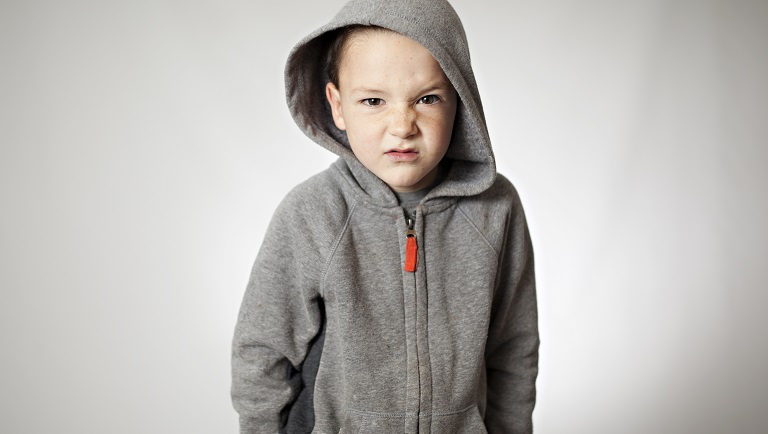
At the same time, anger and rage are natural human feelings that we all experience from time to time. We express these emotions against the injustice that we are experiencing when things do not go the way we want. So it would be wrong for parents to completely suppress their kids’ anger or forbid the child to show it.
When children experience anger, they do not understand what is happening to them; they live every moment with their whole being, spontaneously and sincerely. They are “here and now” and in the power of their emotions.
These are the basic and most important steps to follow when your kid expresses anger:
- Voice his feeling to explain what is happening to him now: “I can see that you are angry now.”
- Show that you understand why the child is angry: “I can see that you are very angry because you want to play, but we have to go now”.
- Tell him that you understand his feelings: “I get why you are angry, I would not like it too if…”.
- Teach him to say how he feels in his own words. Instead of saying “I hate you” or “Bad mother”, etc., explain to him that he should say “I am mad at you”, “I am angry at you for…”.
When you have mastered this stage, you can explain to the kid how to identify early signs of anger. Help your child recognize what warning signals are telling him that he is getting angry. Tell him that we should listen to them as they help us stay out of trouble.
Another important thing to do is to put restrictions on physical and verbal aggression toward people and animals. You should teach the kid to readdress his anger on something else, for instance, on inanimate objects, and show how to express it in acceptable ways.
These are the options that you can offer to a kid:
- to beat or kick the pillow together;
- throw pillows into each other;
- tear paper and throw to the wall or into each other;
- ask the kid to draw what he is angry at and then cross it all out or tear the drawing.
This process can get very fun and, in the end, shifts the child’s emotions to the positive side.
An effective strategy to help your child deal with anger can be called “3 + 10”. Explain to your child that as soon as he feels he is starting to lose control, he needs to:
- take three slow, deep belly breaths — you need to show the child how to take these breaths;
- count to 10 in his head.
You can write this formula on large pieces of paper and hang them around the house.
Also, keep in mind that the best way to teach your child to deal constructively with anger is to through your example.
Disappointment
As a child’s psyche is still unstable, they are more excitable, tearful, and emotional than adults. An insignificant occasion for us may become a real tragedy for a child. A child reacts with tears to all the negative moments in his life, and tears for him are just an expression of emotions that he has not yet learned to restrain.
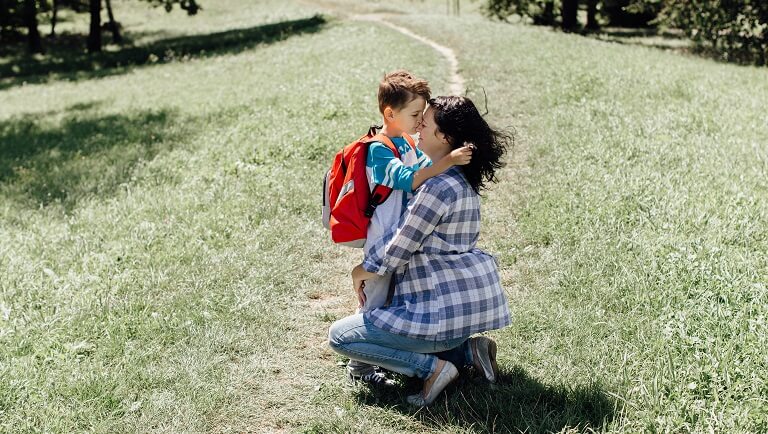
Here are some typical situations when a preschool or an elementary school child starts crying.
1. He is in physical pain
Crying allows the child to relieve painful feelings. In this case, you can hug him, tell him that you understand him. Give the preschooler enough time for him or her to calm down. For example, you can say: “I believe that it really hurts. It will still hurt a little, but the pain will go away soon”.
2. He is trying to cope with tension
At the moment of stress, a preschooler may cry. This way, the body eliminates products of stress hormones disintegration and allows the child to release emotional stress. In this situation, do not leave him alone and offer to help deal with the difficulty and find ways to solve the problem together.
In general, preschoolers need to replace strenuous activities with activities related to rest. To prevent fatigue and restore mental performance, you can use short-term physical exercises, putting on music, and dancing.
3. He is upset or offended
Children of preschool age are very sensitive. A small child is not able to make a cause-and-effect relationship between an event and reaction to it, so he needs more adult’s involvement and clarification of what is happening to him. Find out what may have offended or upset him and try to figure out what preceded this reaction.
4. He needs attention
Crying is one of the most effective ways to get attention. At such moments, the child feels lonely and anxious that he has been abandoned. It is important to return a sense of connectedness and kinship to such children. Try spending more time with your child, hug him more often, create a joint ritual just for the two of you. This creates an important sense of security for the child. When you have to leave for a long time, always tell him when you will return, and come back in time.
5. He reacts to restrictions
When a child cries in response to some prohibitions, do not cancel the ban. Instead, explain the reason for the ban and recognize his feelings. Also, remind that the situation can improve: “I’ll give you more candy next time”, “I know you can handle it”, etc.
When dealing with tears and disappointment, you can follow the same basic steps mentioned before. Support and reassure the child, let him know that you understand his feelings, accept his worries, that he is not alone with them, that you are here and ready to comfort him. By doing so, you establish a deeper psychological contact with him.
These are some soothing phrases that you can use:
- “I’m with you”
- “I’ll be there for you while you’re sad”
- “I’m not going anywhere”
- “You’re safe “
- “I’m so sorry that you lost a toy, etc.”
During intense crying, children’s breathing is often disrupted, making it difficult for the emotion to come out and be experienced to the full. Therefore, the child cannot calm down for a long time. Help him breathe through crying: “Let’s breathe together to help your tears”.

Remember that children can also quickly and unexpectedly switch from tears and bad moods to feeling good. Here you can use your child’s imagination. It helps when the child cannot get what he wants. For example, he wants to spend time with his grandpa, but the grandpa is away. To calm the kid, you can ask him to imagine if grandpa was here: “How would you react if grandpa came over unexpectedly”. This triggers the child’s imagination; he experiences positive emotions and partially satisfies his need. After that, you can reassure that it will happen soon.
Trauma
First, any parent needs to learn the difference between real trauma and disappointment. You should not worry that you traumatize your kid by saying something unpleasant to him or not giving him candy.
When we talk about psychological trauma, we mean that a child is in shock, or when he is confronted with an event that he cannot endure, does not have the strength to deal with without help. These can include:
- physical trauma like falling from the bicycle,
- dealing with loss, for example of a home pet,
- going to the doctor,
- sexual abuse, in which it is better to go to a specialist,
- emotional abuse when a child is humiliated, insulted.
Whether most of these situations will traumatize the child or not depends on his personality, resources, and the presence of an adult who can help him. Remember that each kid has his innate ability to heal. And your task is to help these inner resources and abilities gain strength and heal from his trauma.
A child’s trauma has some key body signs or stages: numbness, hyper-excitement, compression, and dissociation from the situation. When a child is traumatized, he changes a lot at the body level. So when something happens to a child that could potentially cause trauma, you can pay attention to his body signals.
Let’s suppose a child was very frightened by a dog that threw itself at him. And you see that the child froze, became pale, he is glazing. Freezing like this is a natural animal reaction to danger. Still, it can potentially lead to trauma if he does not unfreeze later. According to psychologist Peter Levine, when this frozen energy does not unfreeze, it gets stuck inside our body and produces negative consequences: an anxiety disorder, extreme cases of post-traumatic stress disorder, which do not manifest immediately but over time.
If the child starts crying or shivering, it is a good sign. It means that the energy that was frozen is unfreezing and coming out. He releases this energy of fear, shock, numbness, horror. So let it come out, and do not try to calm him down.
But if the child stays in that state for a long time, you need to give him special attention. Later he can be hyper excited or behave in a chaotic non-habitual manner. He may say something like: “It’s like I saw myself from the outside”. This is the dissociation. He may also start repeating the plot of what has happened to him in his games. It is called the reenactment of trauma: he reproduces the event that traumatized him. In this case, he would play without joy and excitement because his mind keeps going back to that place. His mind is still stuck in that situation. He thinks about what happened and relives it over and over again.
If you were there, the first thing to do when dealing with a child’s trauma is to calm yourself down. There is such thing as emotional contagion when we transmit our emotions automatically to others. So you can turn away your face, calm down and make sure that when the kid sees your face, it is calm, confident, and stable. This is what you have to broadcast to your child. In such a moment, he needs a parent as a resource and protection. Tell him that you are there for him and everything will be all right.
Later that day or maybe the next day, take him to the place where he feels safe, sit or lie down with him, and help him unfreeze that energy. Ask him how he feels, not in general about what happened but in his body. Ask him to show where it hurts, describe the color and the shape of the pain, or even how it looks. These questions make the kid feel as much as he can and release the energy. They teach him to analyze his sensations and take control of them. You will see that later he may begin to yawn or even smile and make eye contact with you. It will be a good sign.
If you were not there when something happened to your kid, and after you have helped him release the stuck energy from his body, you can talk about what happened and how it made him feel.
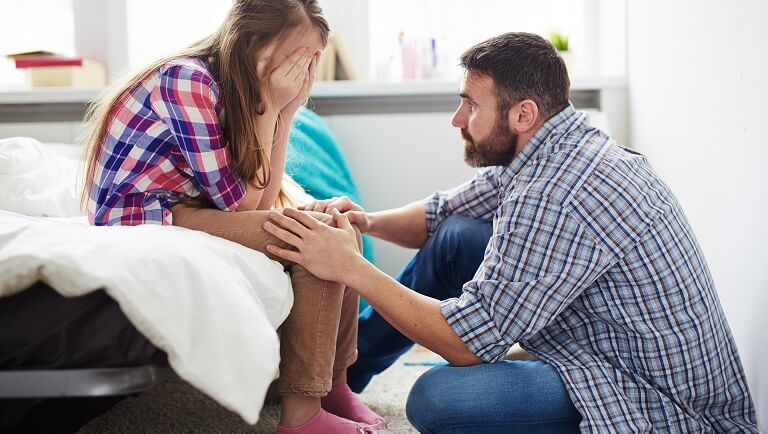
Remember to talk calmly and slowly. You can use fairy tale therapy — together, invent a fairy tale that is similar to what has happened to the child. Obligatory characters are the queen and king (the parents) and their children. It can go like this. One of the children goes on a journey and meets another character in need; he saves him or helps him fulfill his wish and gains a talisman from him.
It is important that the child tells what situation the character that needs help is in and describes how the protagonist saves him. After that, the main character returns home, has a positive emotional meeting with the parents (which is mandatory). You can also reenact the story using toys and dolls. This teaches the child to look at the situation from the outside, to detach himself from the problem, while opening himself to multiple solutions and ways out.
You can always teach your kid to restore a sense of safety on his own through visualization. Ask him to imagine some space where there can be all kinds of objects, people, animals that he wants, anything that makes him feel safe. It is an invisible place that nobody except for him knows about. Tell him that to get there, he just needs to close his eyes or pick a special talisman — as soon as he touches it, he enters this space.
Depression
When we deal with a child’s depression or an experience of violence, it is better to avoid self-care. If you notice that your child has suddenly become very tearful, tense, has lost interest in life and hobbies, avoids communication with family and friends, has nervous tics, nightmares, and other serious symptoms, you should seek professional help. Only a child psychologist can make a detailed diagnosis of the child’s emotional state.
How NOT to deal with child’s emotions
Anxiety
Do not force your child to do things that cause him anxiety. If your child is afraid of life-size dolls, do not beg him to take a picture with one in an entertainment center. This will not help to get rid of anxiety but will make him feel resentment towards the parents. Whatever he is anxious about, you can only gently encourage your child, and over time he will gradually learn to cope with anxiety.
Anger
Kids often direct their anger at their parents. Be careful, as this feeling is contagious. It is best to establish such a rule in your home from the beginning: “In this house, we solve problems when we are calm and in control of ourselves”. Always follow that rule yourself.
And the next time your child gets angry and starts demanding a quick fix, you can say, “I need a break. Let’s talk about it later”, and then calmly walk out without responding to your child’s reaction. Soon he will get that parents would only discuss the problem with him when he is calm and can keep his feelings under control.
Disappointment
The same as when dealing with anger, when the child is crying, it is very tempting to send him to his room. This, however, sends the kid wrong non-verbal messages:
- No one cares why he is crying or angry; no one will help him deal with them.
- Being angry is bad, and he is a bad person if he does not act the way others expect him.
- His anger scares his parents, and they do not know how to deal with his feelings.
- When you are angry or sad, the best way to deal with it is to pretend it is not there.
Other wrong ways to deal with a child’s disappointment are:
- Distract the child too soon from his emotions with phrases like: “Look who is here!” etc.
- Rushing to fix the situation. This is how we form manipulative behavior, and tears become an effective weapon.
- To embarrass and silence.
- Punishing and threatening: “If you don’t stop now, we’re going home!”
- Making fun of tears, especially in the case of boys.
It is important to explain in which cases it is inappropriate to cry. To cry over nothing is bad. To manipulate parents with tears and tantrums is not acceptable. But in difficult and tragic situations, it is normal and natural to cry.
Trauma
The mistake that most parents make when a child is traumatized is asking him how he feels. It is impossible to know how we feel during trauma. For example, when someone dies, you do not know what to say; you have no words. The same goes for the child. When he is in shock, you do not ask how he feels. First, you have to pay attention to his body’s sensations so that he can monitor this and help him release this energy. Then you can talk about his emotions.
If your child learns to endure daily life challenges without reactive anger, disappointment, stress, he or she will be more effective in negotiating and achieving goals in adulthood. Those who know how to manage their emotions are called emotionally literate.

new engaging articles



